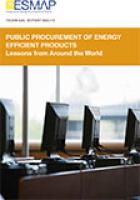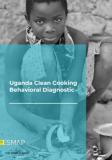Publications

The public sector represents a strategically important market for energy efficient goods and services. As a big and visible consumer, actions taken by a government to improve their energy efficiency (EE) can strongly influence its citizens.
This report assesses global experiences with energy efficient purchasing (EEP) as a tool to help governments improve the efficiency of their facilities and public services. Many government jurisdictions—countries, states/provinces, and local governments—are adopting policies that require or encourage the procurement of energy efficient products by public agencies. Despite these initiatives, prevailing challenges exist including:
- A lack of incentives due to budgetary restrictions, split incentives and other factors;
- Limited financial resources needed to pay for the higher upfront cost of more energy efficient equipment or to finance purchases to amortize these costs;
- Restrictive policies and procedures, which make procurement, budgeting, and new approaches more difficult;
- Behavioral inertia of a risk-adverse public sector used to the status quo;
- No or poor access to information and institutional knowledge about EE opportunities, implementation options, certified energy efficient equipment, lifecycle costing; and
- Weak governance, which can introduce new challenges when governments pay a premium for energy efficient products.
Key observations of global EE programs from a review of 10 case studies and interviews with experts revealed—among other observations—that EEP remains a popular policy instrument being implemented or considered in many, mostly developed and middle-income, countries.
The study concluded that EEP policies and programs can be an effective way to promote energy efficient products by leveraging a government’s purchasing power and influence.
Singh, Jas; Culver, Alicia; Bitlis, Melis. 2012. Public Procurement of Energy Efficient Products Lessons from Around the World. Energy Sector Management assistance Program (ESMAP); technical report 003/12. World Bank, Washington, DC. © World Bank. https://openknowledge.worldbank.org/handle/10986/17485 License: CC BY 3.0 IGO.

